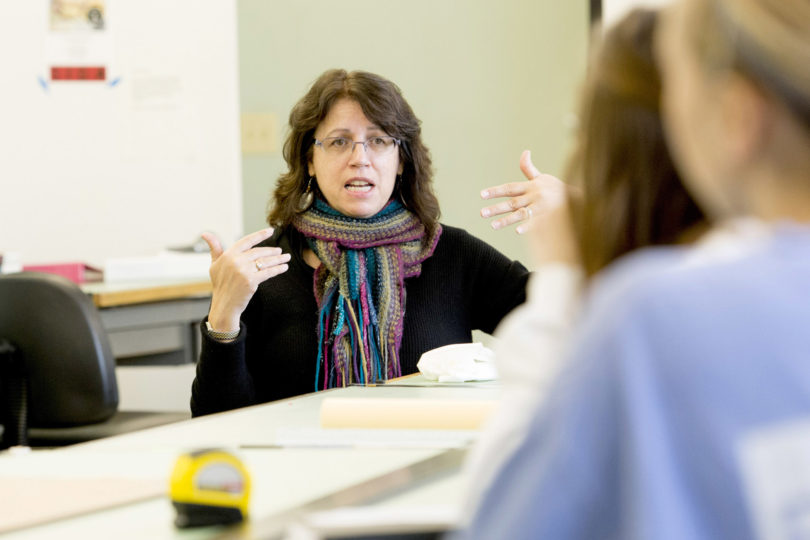FACTS
Lilia Gomez-Lanier
Assistant Professor
- College of Family and Consumer Sciences
- Ed.D., Education, Argosy University, 2013
- M.S., Architecture, Georgia Institute of Technology, 1984
- M.S, Anthropology, Georgia State University, 1998
- B.S., Architecture, Georgia Institute of Technology, 19828
- At UGA: Two years, seven months
Growing up in two countries and with an American mother and Venezuelan father, Lilia Gomez-Lanier recalls from childhood the difference between the two cultures, specifically how cultural values and beliefs affected the aesthetics of buildings and their interior spaces and how people used them.
These cultural differences set the tone for Gomez-Lanier’s interest in the relationship between built environments and an individual’s meaning of space, aesthetics and use of space.
“I found it fascinating that homes and buildings in the U.S. and Venezuela were so different from one another,” said Gomez-Lanier, an assistant professor of furnishings and interiors in the College of Family and Consumer Sciences. “For instance, our home and those of our friends in the U.S. had painted walls with wood trim, carpet, hardwood floors and air conditioning, while in Venezuela our family home had terrazzo floors, the house was very open to the backyard and exterior walls were a combination of poured concrete and open concrete blocks with insect screens for natural ventilation.”
The differences didn’t end there, she said.
“In our house in the U.S. the family room with its TV was the primary room in the house, while in Venezuela the outdoor patio served as the primary room for our family and friends who would come to play dominoes nightly,” Gomez-Lanier said.
Before her career at UGA in 2013, Gomez-Lanier taught interior design at the Art Institute of Atlanta and worked as both an architect and interior designer for several firms in Atlanta.
Gomez-Lanier credits her interest in both cultural anthropology and architecture, as well as her unique upbringing, with shaping her teaching style.
In the classroom, she said she strives to give her students a voice, believing that learning is based on the combination of life experiences and classroom knowledge. She also expresses an appreciation for service and experiential learning while encouraging collaboration.
“Everybody has life experiences,” she said. “I might have the knowledge and professional experience, but you as the student have life knowledge that can add to class discussions, which enriches the learning process for all. Learning is a collaborative effort whether in the classroom or in an office.”
Gomez-Lanier teaches eight classes ranging from history of design, kitchen and bath studio to hand drafting and presentation in the college’s textiles, merchandising and interiors department.
She also serves as faculty adviser to the Student Interior Design Association and co-faculty adviser to UGA’s American Society Interior Design student chapter, and is a member of UGA’s Faculty Sustainability Community.
“I enjoy teaching because it is constantly evolving and dependent upon industry trends and educational pedagogies,” she said. “There is so much to learn in life that I try to learn at least one thing a day. Whatever knowledge I have I want to share with others.”
Gomez-Lanier’s research interests include online learning, the use and spatial quality of built environments, cultural expressions in the built environment and experiential learning.
She’s currently working on a research paper focused on the use of empathy in the classroom setting, which will be presented at a conference later this year.
The research grew out of a collaboration with the FACS Institute on Human Development and Disabilities, whose leaders asked Gomez-Lanier’s senior design studio students to propose renovation ideas for the homes of three disabled Georgia farmers.
“Not only did the students gain experience in interviewing a real client, but they also witnessed firsthand the difficulties a physically disabled older adult has with completing everyday activities in their own home, one that was not designed for a disabled person,” Gomez-Lanier said. “The students were able to step into the shoes of an actual person and empathize with them, gaining a greater understanding of how design integrates user program needs and enhances quality of life.”








